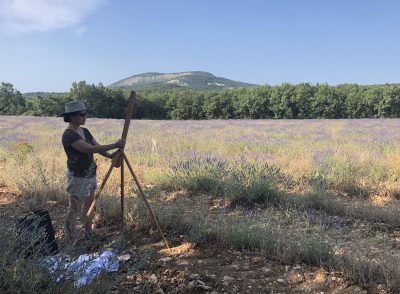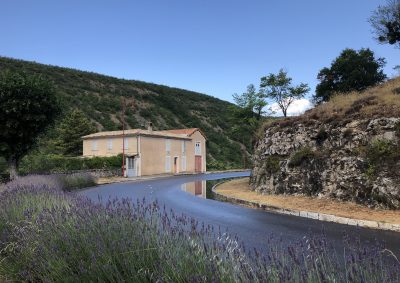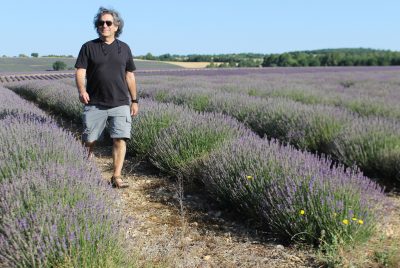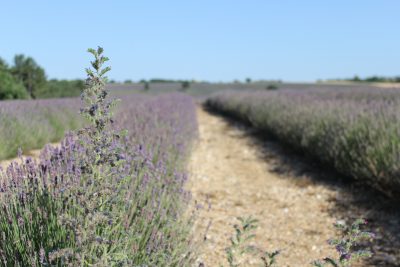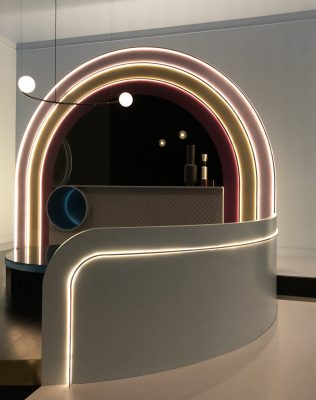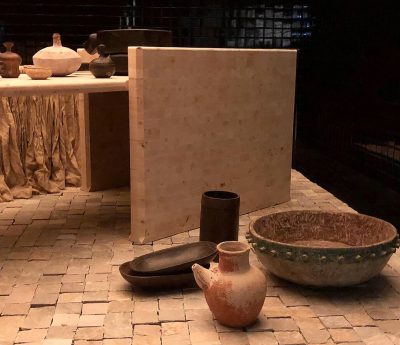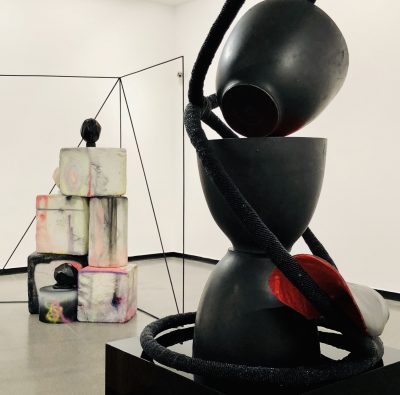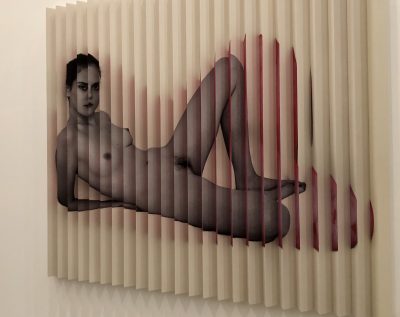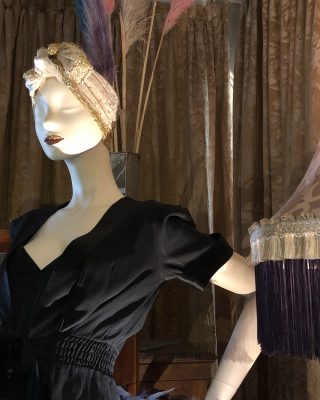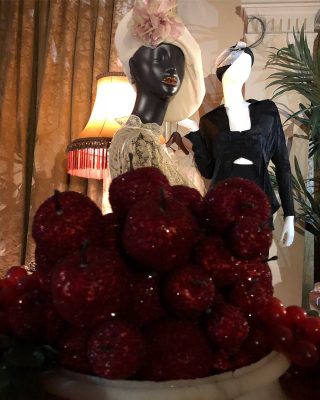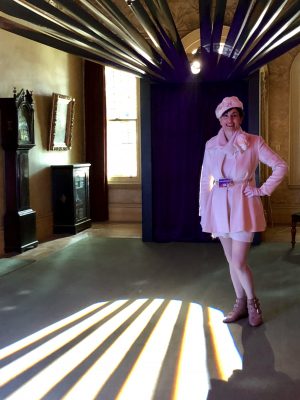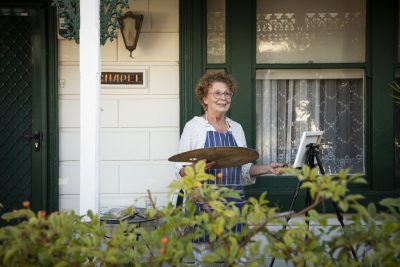
My place. Photo credit: Sanjeev Singh ‘Housebound – A Portrait Project in Isolation’
Staying at home. Worldwide, where we’ve been for three seasons. Here in Australia that’s Autumn, Winter and now, Spring. Throughout, I have been recording these COVID-19 times, photographically, making art and appreciating the abundance of visual and performing arts made available from galleries, theatre, opera, ballet companies and museums globally. Locally, many talented friends have been creating online performances and literary events. At commencement, back in March 2020, I thought this project had an end date. Now, I don’t know. When I started to itemise my pictorial collections, it became a series of headlines, categories.
“Trees of life”
At the very beginning, there was intense anxiety, fear. Around Europe, much loved countries – Italy, Spain, France – were ‘in lockdown’ (a now familiar phrase), with extraordinary and increasing numbers of people suffering and dying from the virus.
My first project then was to suggest to friends on social media that everyone ‘has a go’ at drawing trees or plants. I drew trees around my neighbourhood, taking photos on my morning walks, then sketching in different mediums, various textures. Friends too would draw trees and plants, send them to me. I looked forward to my afternoon sketching, and found real joy in drawing trees. I still do!






Images: First sketch in my backyard, Derwent colour pencils; ink sketching; gum tree in pastels; watercolour and ink; ink sketching; pastels on black paper (local walking track).
SEASON ONE: AUTUMN
The best place to be in autumn is ‘my place’, Victoria, Australia. The sometimes oppressive heat and wind that can hit in Summer has passed, along with our bushfires season. Daylight, from beginning to end, is welcoming, colours are rich and outdoors beckons. I’ve walked in the mornings since my late teens. Daybreak is my favourite time of day.






Photos: Morning walks around Middle Park and St Kilda beaches; Albert Park Lake; it’s autumn!






Photos: Locals stroll the beach at the end of the day, as light turns golden, mauves, reds, oranges, greys and deep purple; that’s autumn!
There’s beauty in isolation.
Isolation can be a wonderous place. I’m content in seclusion when rambling around UK’s Lake District or strutting that cornucopia, Rome. But, when it becomes law-enforced for the purposes of your own health, protecting not only your community, but also a global population, its emphasis shifts hugely. “Isolation” (a.k.a. Iso) is the new vernacular, “social distancing” the common idiom.






“Easter – Home Sweet Staying Home” (my second project).
I stayed in touch with friends around the world, aware of the varying restrictions, thankful that here in Melbourne I could still walk, walk, walk. Easter is a family occasion, a vacation, often a ritual of returning to the same holiday destination year after year. But, Easter 2020 meant everybody would be staying home. Wanting to connect with friends, I asked them to send photographs. Gallery below.






Photos: Ailsa – Sydney, Australia; Amy – Brooklyn, NY, USA; Jason, Angela, Alice and Cookie – Woodend, Vic. Australia; Bella & Byron, Melbourne, Australia; Carl – Melbourne, Australia; Charlotte – Mornington Peninsula, Australia






Photos: Clive & Michelle – Bintulu, Sarawak, Malaysia; Donna (Berkhamsted) & Oli (London), UK; Jane & Elizabeth – Edinburgh, UK; Emilie, Richard & Cooper – Estepona, Spain; Phil, Charlie & Fiona – Hepburn, Vic. Australia; Roger & Jacquie – Church Point, NSW, Australia






Photos: Joan, Amy & Allan – Rickmansworth, Herts. UK; John & Jen – Wilmslow, Cheshire, UK; Julie – Melbourne, Australia; Laurel,John & Lottie – Melbourne, Australia; Natalie – Melbourne, Australia; Yves & Monica – Quebec, Canada; Joanna – New York, USA;






Photos: Natalie – Melbourne, Australia; Victoria & Carmen, Sevilla, Spain; Colin & Katrina – Cooroy, Qld. Australia; Honor, Ripley & Mum, Miranda – Melbourne, Vic. Australia; Sue & Barry – Safety Beach, Australia; Peter – Mornington Peninsula, Vic. Australia
ANZAC DAY – 25 April 2020
The first time I haven’t marched for my Dad (Pte Norman Robert Reid VX34575, 9th Division Cavalry) since he passed away in 2001. I created an artwork for Norm – pastel portrait, collage of mixed media using copies of memorabilia my Nana had kept – and titled the work “My Dad, My Hero”. With telegrams from when Dad was wounded and later removed from the critically ill list, a Christmas card he’d sent home from Bethlehem, newspaper announcements of those wounded, missing, killed in action and family photographs, I painted intense colour and torn fragments to depict the chaos of war, the anxiety for those who love and wait at home.
Our little street held a dawn service. It was important and personal. I went out walking as daylight broke through the skies. LEST WE FORGET.





Photos: Look up! Walking around Albert Park Lake, back along St Kilda beach. “My Dad, My Hero”.
#blacklivesmatter
May 25th – Horror! Again and again we watched vision of an American policeman pressing his knee into another man’s neck, literally squeezing the life out of George Floyd who cried out that he couldn’t breathe, for his Mother. Other policemen stood around, doing nothing to stop blatant murder. At home, we were helpless. This reality immobilised us all, this slaughter should change how the world thinks. People protested. I drew in coloured pencil on black paper, an artwork titled “I Can’t Breathe”.




Photographers unknown: Policemen in USA go down on one knee in solidarity and respect for George Floyd’s life; (credit AP) Black Lives Matter on a Washington Street; Protesters in Australia. “I Can’t Breathe” pastel on black paper.
SEASON TWO: WINTER
Winter has two faces here in Melbourne: either clear, blue skies with cold, crisp air or ….bleak! I think I was born with old people’s bones as I feel every chill and wind, struggling to find that “warm and cosy.” From childhood to high school years, I suffered painful chilblains on my hands and feet. Back then, girls were not allowed to wear trousers to school. Stockings under a tunic never kept my legs warm.
Layers of clothing, that’s me all winter. I determined to add some degree of colour or attractiveness during these lockdown times, but it remained dull shades of black, grey, brown starting with tracksuit pants, sox, skivvy and jumper, scarves (they do add colour) and – ask any Australian – Ugg boots. Leaving the house adds puffer jacket, gloves, beanie plus mask – don’t forget earplugs to listen to the radio. My day always starts in quality walking shoes, but there have been several times when I’ve left the house, unintentionally still wearing Ugg boots. Just too many layers to remember!






Photos, Morning beach walks: storm on its way; layers of blue; 2C degrees; fog over St Kilda; icy waters; Kerford Rd pier.






Photos: Foggy around Albert Park Lake; paddling swans; those blues; Late afternoon; Rugged up; windy at dusk.
That Great Ocean Road
I’ve missed not being able to get to the coast, opening the windows to the sound of surf and smell of ocean air, strolling the coastal walk, soaking up the every-changing colours and light. In early July – when restrictions had momentarily eased – we travelled out of metropolitan Melbourne. “We” is my daughter, son-in-law and grandson. Three precious days at Aireys Inlet, before returning to the city as our Premier announced the next ‘Stage 3 lockdown.’






Photos: Aireys Inlet sunrise coastal walk; towards Lorne; clouds roll over the Inlet; dusk walk along Painkalak Creek, back around the bird sanctuary.






Photos: Family time at Aireys Inlet; Split Point Lighthouse; “the pub with no beer” Aireys Pub closed during Lockdown; painting by the fireswide.
Everybody Loves Good Neighbours
I’m grateful for my neighbourhood, particularly the traders in our little village. Food providor, Gum Tree, has everything in the way of yumminess; fresh fruit and veg, the best of international cheeses, an excellent charcuterie, and sweets. My “local hero” is Italian Restauranter, Donato at Tacco & Tosca. With the restaurant closed, Donato is baking bread daily in his wood fired oven, as well as biscotti, and fresh pasta made to order, bringing a little bit of Italy to my place as he greets me “Buongiorno”. His veg lasagne has become a favourite. Coffee! Mine from Jack the Geezer.
We celebrated “Christmas in July”, lighting up our houses to bring some joy to this challenging winter. Neighbours made mulled wine and shortbreads. These festive care packages were placed on our verandahs and we toasted our street, a row of small Victorian cottages.







Photos: Gum Tree; Buongiorno Donato; Happy coffee on the walking track: festive “cheers” Michael & Lindsay; with libraries closed, this new street library has been added to the neighbourhood; local laneway art.
Art & Entertainment Online
Mid-winter I started two hour online life drawing with the-art-room.com.au. Preferring a live model situation, I was surprised how enjoyable it was on a Saturday morning. All the models were good, individual. The Art Room had done specific photo sessions, poses were challenging.







I have been a little over-excited at the visual and performing arts online. Fortunately, I’m not sedentary or I would never leave the computer, absorbing as much as possible. From early on, I enjoyed weekly (virtual) matinees with a theatre-going friend. We prepare a snack platter, pour a wine, and simultaneously – from respective homes – watch outstanding theatre productions. Top of our list: National Theatre Live ntlive.nationaltheatre.org.uk and the Royal Shakespeare Company www.rsc.org.uk, but so many more including the Zurich and Glyndebourne Opera companies. I’ve watched innumerable talks and virtual tours from galleries and museums around the world: our National Gallery of Victoria www.ngv.vic.gov.au; the National Gallery, London www.nationalgallery.org.uk and Tate www.tate.org.uk are my ‘regulars’. It is an entertaining and educational opportunity to view one specific artwork or a particular artist. There is a wealth of works on show when you visit, it’s impossible to give dedicated time. As well, I have enjoyed many dance and song performances on social media feeds by local friends and international artists.
I confess, I’ve become a glutton for it all!







Photos: National Theatre Live “Small Island” (mesmerising); National Gallery, London “Mr & Mrs Andrews (entertaining); Drawing with NGV (fun); RSC “Two Gentlemen of Verona” (always excellent); National Gallery, London “collage inspired by Henri Rousseau” (enjoyable and immersed); NGV Dora Maar, a favourite ( informative).; Aust Ballet, beginners classes.
Mandatory Masks here in Melbourne, as we moved into Lockdown Stages 3 and 4.






Photos: 23 July, our first day of mandatory mask wearing; masked-up builders, struck a ‘Staying Alive” pose for me; ‘selfie’ in a mask outside local restaurant, Donovans; 6pm, an eerie dusk walk on the eve of Lockdown Stage 4, Sunday August 2nd.
Cyclists and I appreciate the same waking hours. When going through my photographs, I realised how often I had photographed those Early Birds on bikes, in the past months.







SEASON THREE: SPRING
It’s mid-way through September. Spring burst forth seemingly overnight: earlier daylight, birds singing, cygnets and ducklings on the lake, coloured cottage gardens, and warming temperatures.
I had not intended this blog to be lengthy, but nor could I have known we would be at this stage of a ‘never ending story’ when COVID-19 first surfaced early 2020. Staying home – one day at a time, Autumn, Winter, Spring!






Photos: “Hello Spring” blue skies; Birds of Paradise; morning exercise; selfie with the cygnets; catching warm rays; afternoon paddling in the sandbars.
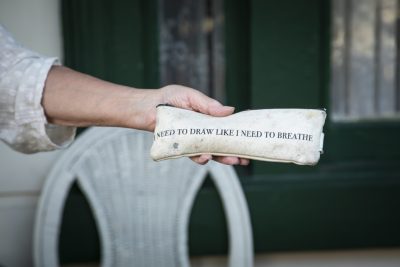
Photo credit: Sanjeev Singh ‘Housebound – A Portrait Project in Isolation’
© Photographs and text Pamela Reid/tPRo 2020
(Excluding photos sent by friends at Easter, and those by photographer Sanjeev Singh, with thanks.)
